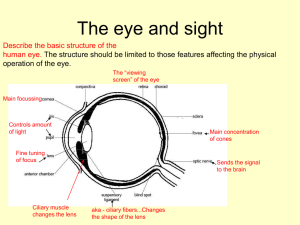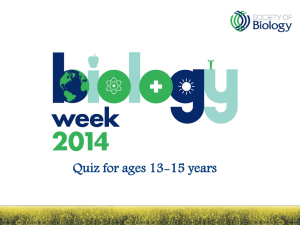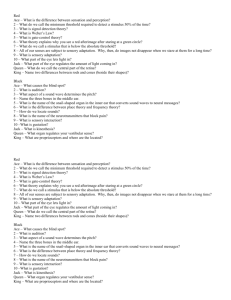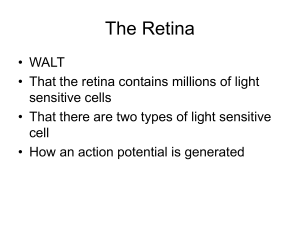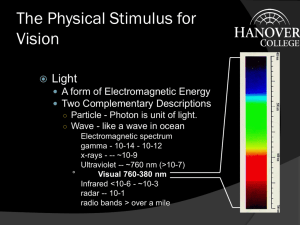Humans have two types of photoreceptor cells – rods
advertisement
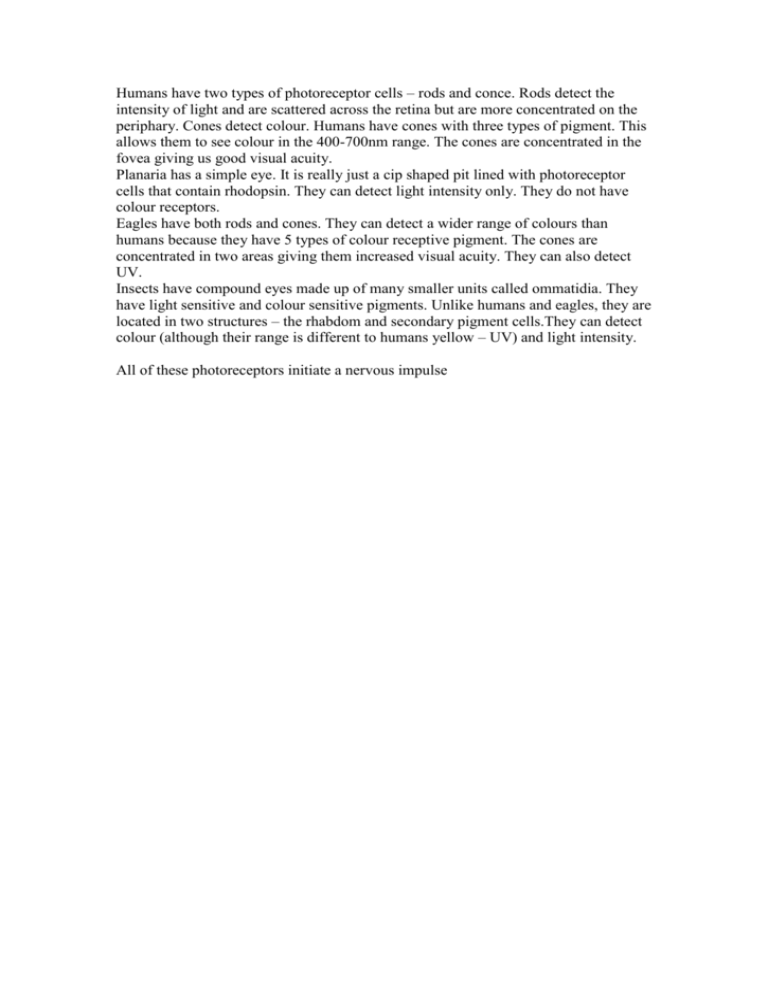
Humans have two types of photoreceptor cells – rods and conce. Rods detect the intensity of light and are scattered across the retina but are more concentrated on the periphary. Cones detect colour. Humans have cones with three types of pigment. This allows them to see colour in the 400-700nm range. The cones are concentrated in the fovea giving us good visual acuity. Planaria has a simple eye. It is really just a cip shaped pit lined with photoreceptor cells that contain rhodopsin. They can detect light intensity only. They do not have colour receptors. Eagles have both rods and cones. They can detect a wider range of colours than humans because they have 5 types of colour receptive pigment. The cones are concentrated in two areas giving them increased visual acuity. They can also detect UV. Insects have compound eyes made up of many smaller units called ommatidia. They have light sensitive and colour sensitive pigments. Unlike humans and eagles, they are located in two structures – the rhabdom and secondary pigment cells.They can detect colour (although their range is different to humans yellow – UV) and light intensity. All of these photoreceptors initiate a nervous impulse






